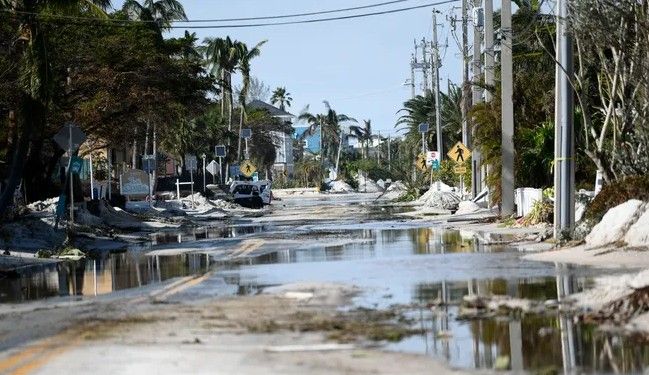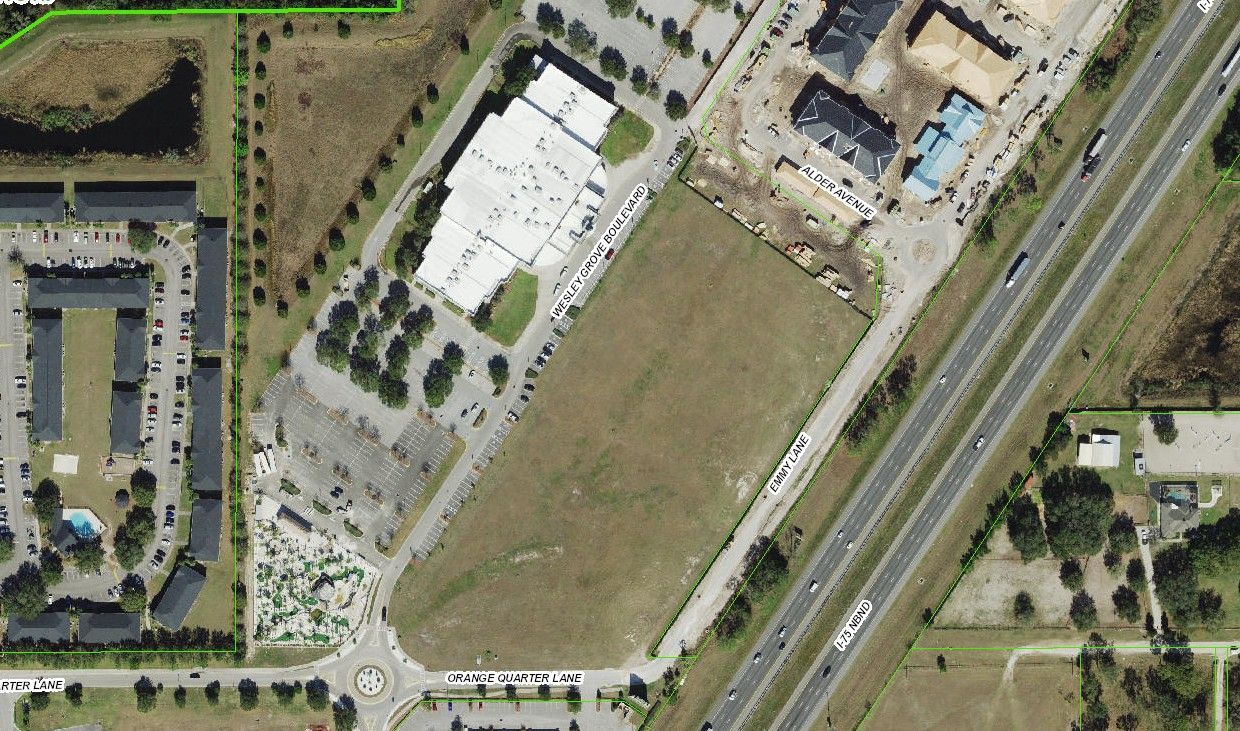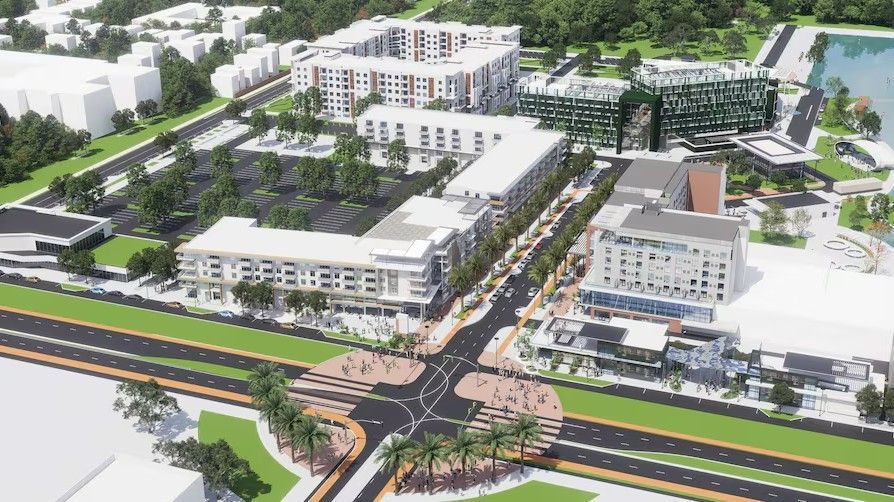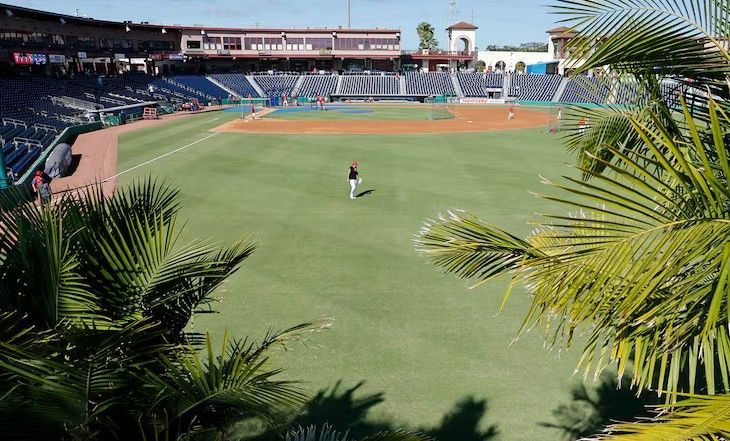2025 Outlook: Florida’s Property Insurance Recovery & Real Estate Stability
Florida’s property insurance market is finally showing signs of recovery in 2025, following several years of volatility. A combination of legislative reforms and a resilient response to recent storms has begun to steady both residential and commercial insurance rates. For those in the commercial real estate space, this shift offers a much-needed sense of predictability. With fewer surprise exclusions and more stable premium trends, stakeholders can breathe a little easier—even if hurricane season keeps everyone on alert.
In this post, we break down the effects of the 2024 hurricane season, 2025 premium trends, key legislative changes, reinsurance market updates, and what these developments mean for property owners, brokers, and investors across the state.
After the 2024 Hurricane Season: Resilience in Action

The 2024 hurricane season was undeniably expensive. Major storms like Hurricane Helene ($16 billion in insured losses) and Hurricane Milton ($25 billion) dealt significant blows to Florida. But unlike past years, these disasters didn’t spark a mass insurer exit or dramatic premium spikes. In fact, Florida’s property insurance market closed out the year stronger than it began.
Industry experts attribute this resilience to better-capitalized insurers, stronger reinsurance backing, and the cumulative impact of recent legal reforms. Mark Friedlander of the Insurance Information Institute pointed out that rates heading into 2025 were flat—or even decreasing—in many parts of the state. Given the scale of the storm losses, that’s a noteworthy sign of stabilization.
The commercial side of the market followed a similar pattern. While business property policies faced the same hurricane pressures, the improved market structure helped avoid the chaos seen in prior years. The days of overnight cancellations and steep premium hikes after a single storm are, at least for now, behind us.
For both homeowners and commercial property owners, 2024 renewals were far less turbulent than expected. Florida’s insurance sector took a hit—but remained standing. That alone offers cautious optimism for everyone from Tampa homeowners to Miami investors.
Premium Trends in 2025: Stabilization and New Players
If 2024 was the year of weathering the storm, then 2025 marks a return to relative calm in Florida’s property insurance market. According to the Florida Office of Insurance Regulation, rate filings for 2024 showed a modest downward trend—the first in several years, suggesting a stabilizing market landscape. More than 30 insurance providers reported either no premium increases or actual rate reductions on 2024 policies, a stark contrast to the relentless hikes seen in prior years.
In fact, Florida posted the most stable property insurance rates in the nation last year, with an average increase of just 1%. Some regions, like Southwest Florida, even experienced average premium decreases in the mid-teens—though actual results vary depending on location and building specifics.
Crucially, new insurance capacity is returning to the state. Since the passage of major legislative reforms in 2022 and 2023, over a dozen new property insurers have entered the Florida market. By mid-2025, at least 14 new carriers were approved to write policies—a clear sign of renewed confidence in Florida’s insurance environment.
And these aren’t speculative startups. Incline National Insurance Company, a well-capitalized, A-rated carrier out of Texas, is now offering statewide coverage. A newly formed Florida-based insurer is targeting condo associations and small commercial buildings, backed by specialized reinsurance programs. This increased competition gives property owners and brokers more options—and better leverage—when shopping for coverage.
Even Citizens Property Insurance Corporation, the state’s insurer of last resort, is shrinking. The number of Citizens policies dropped from a peak of 1.4 million in late 2023 to about 841,000 by May 2025, thanks to private carriers assuming more risk. This trend is encouraging: a lighter policy load on Citizens reduces the likelihood of post-storm "hurricane tax" assessments on all Florida policyholders.
Most importantly, Florida’s domestic insurers, which were running at a loss just a few years ago, posted collective profits in 2024. That profitability strengthens the overall market and helps maintain rate stability moving forward.
For commercial real estate professionals who have grown used to bracing for double-digit insurance increases, a flat renewal—or even a single-digit reduction—is more than a pleasant surprise. It’s a welcome shift toward predictability in an industry that thrives on it.
Legislative Tailwinds Through 2025
Florida lawmakers have remained actively engaged in the state’s recovery, with new efforts in late 2024 and 2025 reinforcing earlier reforms. The legislative changes from 2022 and 2023—such as eliminating one-way attorney fees, restricting abuse of assignment of benefits (AOB) contracts, and tightening bad-faith litigation rules—have been widely credited with reducing excessive lawsuits and loss cost inflation.
In 2024 and into 2025, lawmakers expanded these efforts with targeted measures to fortify properties and streamline insurance operations:
Stronger Roofs and Mitigation Incentives:
May 2025’s HB 715 broadened the responsibilities of licensed roofing contractors, requiring them to improve roof-to-wall connections during replacements. This alignment with stricter building codes should help reduce storm-related losses—and by extension, help keep premiums from spiking. Lawmakers also allocated an additional $200 million to the My Safe Florida Home grant program, helping homeowners (especially low-income and elderly residents) upgrade their homes to better withstand hurricanes. The goal is clear: fewer claims, stronger properties, and more market stability.
Tougher Consumer Protections:
To protect policyholders from post-storm contractor scams, new legislation limits homeowners to a 10-day cancellation window on roofing repair contracts signed after an emergency declaration. This discourages opportunistic behavior and protects consumers from being manipulated into hasty agreements. Additionally, 2024 reforms strengthened regulatory oversight—requiring insurers and adjusters to respond more quickly to complaints and cracking down on bad actors. These changes help foster trust in the system and improve the overall claims environment.
Expanded Surplus Lines Access:
A major 2025 bill (HB 1549) eliminated the outdated “diligent effort” rule that previously required agents to exhaust the admitted market before turning to surplus lines carriers. Surplus lines—often used for higher-risk or non-standard properties—can now be accessed more efficiently. This is a big win for commercial property owners, especially those with older buildings or complex insurance needs, as it reduces delays and avoids potential coverage gaps.
Defending Reform Momentum:
Perhaps the most impactful development was what didn’t pass. Efforts to reinstate one-way attorney fees—reforms that previously drove up litigation and discouraged insurer participation—were successfully blocked. The proposal was defeated in committee, with strong indications the Governor would have vetoed it anyway. This sent a powerful signal: Florida is committed to maintaining a stable, pro-consumer, anti-fraud insurance environment.
That consistency matters. It gives insurers and investors the confidence that Florida won’t revert to its litigious past. For now, with regulatory and legislative support firmly in place, the state’s insurance market is finally on steadier ground.
Reinsurance and Underwriting: Adjusting to the New Normal
Florida’s insurance policies rest on a foundation of global reinsurance—and for the past several years, reinsurers were charging steep premiums to cover the state’s hurricane-prone risk. In 2023, reinsurance costs surged over 25%, sending primary insurance premiums even higher. But in 2025, we’re finally seeing meaningful relief.
During the January 1, 2025 renewal period, property catastrophe reinsurance rates dropped by an average of 10% for programs with no major recent losses. Florida’s Office of Insurance Regulation also reported a 1.7% average decline in reinsurance costs for carriers in 2024 compared to the year prior. That shift signals a renewed vote of confidence from global underwriters in Florida’s risk profile and regulatory stability.
Florida’s own mechanisms played a role as well. The Florida Hurricane Catastrophe Fund (FHCF) reduced its 2024 premiums by 8.3%, although it raised its retention (the threshold before coverage kicks in) by $2 billion for 2025. Meanwhile, the private market is strengthening. New startup insurers have entered Florida, Citizens is moving more policies to private carriers, and global reinsurers and catastrophe bond investors have stepped in with fresh capital. Citizens itself sponsored a record-breaking $1.525 billion catastrophe bond to help supplement its traditional reinsurance.
The result? Most Florida carriers were able to secure the coverage they needed for the 2025 hurricane season—at rates that, while still elevated, are no longer skyrocketing.
Underwriting Behavior in the “New Normal”
Insurers have adapted, becoming more selective about the risks they’re willing to underwrite. Older homes—especially those with original tile roofs or minimal wind mitigation—are facing tougher scrutiny. Properties with reinforced roofs, impact windows, or upgraded features are being rewarded with broader coverage and more favorable pricing.
The trend is clear: Florida’s insurers are using their stronger financial footing to focus on better-quality risks. At the same time, they’re pulling back from covering minor, high-frequency claims. Reinsurers have little appetite for the small stuff—like moderate wind or hail damage—so insurers are adjusting deductibles and policy terms accordingly. This often means higher windstorm deductibles or more out-of-pocket costs for policyholders when small losses occur.
But when it comes to major events—true catastrophes—the reinsurance market is showing up in force. Coverage is still robust above certain thresholds, and insurers are better capitalized to withstand a hit. In fact, Florida carriers collectively increased their surplus capital by 6.5% in 2024, offering a stronger buffer going into the next storm season.
One Cautionary Note
Despite the improvements, Florida’s system isn’t bulletproof. The FHCF estimates it has $9 billion in liquid resources against $17 billion in potential exposure for 2025—leaving an $8 billion gap that would likely be covered by post-event bonding or policyholder assessments in a worst-case scenario. If a Hurricane Andrew-level disaster struck, the financial strain could still ripple across the market.
Bottom Line for Commercial Property Owners
The reinsurance market in 2025 is in a far healthier place, and that stability is trickling down to insurers and policyholders. But the approach is more disciplined than ever. Stronger buildings get better rates. Weaker ones may pay more—or struggle to get coverage at all. As always in Florida, resilience and mitigation aren’t just smart—they’re essential.
Implications for Commercial Property Owners and Investors
For Florida’s commercial real estate stakeholders, the recent shift in the insurance market offers welcome relief. After years of relentless premium hikes and limited coverage options, property owners and investors are finally seeing conditions stabilize—and in some cases, improve. This shift creates a timely opportunity to revisit insurance strategy across asset classes.
Budget Relief & Operating Efficiency
With premiums leveling off—and in some instances, declining—property owners are seeing reduced pressure on operating budgets. For assets like multifamily, retail, or office buildings, insurance is becoming a more predictable expense, rather than an unpredictable drag on NOI. Some owners are even securing quotes below expiring premiums, thanks to increased carrier competition. These incremental savings can enhance asset performance, support valuations, and strengthen investment returns. Insurance is re-entering the realm of manageable, rather than volatile.
Improved Coverage Access
More carriers are stepping back into the Florida market, reducing the risk of being forced into Citizens or struggling to find coverage at all. New entrants focused on high-need sectors—like condo associations or specialized commercial buildings—have widened the pool of options. Brokers now have more markets to approach and fewer roadblocks to securing viable coverage. Additionally, recent legislation removing the “diligent effort” requirement streamlines access to surplus lines—especially beneficial for unique or higher-risk properties. This agility matters: securing timely, gap-free coverage is critical for financing, closings, and ongoing asset management.
Risk Mitigation as a Value Driver
One thing hasn’t changed—Florida insurers remain laser-focused on resilience. Carriers are rewarding properties with hardened features: reinforced roofs, upgraded windows, elevated mechanicals, and other mitigation measures. Conversely, buildings with outdated systems or clear vulnerabilities face limited options or higher premiums. Public grant programs like My Safe Florida Home can help offset upgrade costs, but even without assistance, many improvements pay for themselves through long-term savings. Risk engineering is no longer optional—it’s a strategic lever for better pricing, stronger tenant appeal, and broader insurability.
Portfolio Strategy & Investment Outlook
The improving insurance climate is reshaping the investor mindset. Where national buyers and REITs once hesitated, many are now reconsidering Florida—especially in light of a relatively flat average premium increase (~1%) in 2024. While localized risks still matter (for example, premiums in Monroe County remain significantly higher than inland markets), insurance is no longer the automatic deal-killer it once was. The key is underwriting with clarity, pricing in risk accurately, and exploring value-add plays that include mitigation-driven savings.
Broker Strategy & Structuring Opportunities
With new carriers and products in the market, insurance brokers and advisors have more tools to deliver value. Aggressively shopping renewals, revisiting previously unworkable quotes, and rethinking program design—such as higher deductibles paired with parametric coverage or layered placements—can result in stronger outcomes. Insurers are showing renewed willingness to write well-managed risk, especially where mitigation and maintenance are evident. This is the moment for brokers to be proactive and strategic, not just transactional.
Looking Ahead: Cautious Optimism for the Long Term
Florida’s property insurance market may not be out of the woods, but 2025 marks a welcome pause in the volatility. A mix of meaningful legislative reforms, an influx of new capital, and a reprieve from major storm impacts has created conditions that industry experts now describe as “manageable” and “stabilized”—words not often associated with Florida insurance in recent years.
This stability has tangible benefits across the board. Homeowners are seeing more affordable options, businesses can forecast insurance costs with greater confidence, and commercial real estate transactions are no longer stalling due to last-minute coverage issues. It’s a rare moment of equilibrium in a state where the insurance conversation has often been dominated by crisis.
That said, the calm is cautious. The 2025 hurricane season is expected to be slightly above average, and the real test will come if (or when) a significant storm makes landfall. Insurers must demonstrate that their bolstered capital reserves, reinsurance arrangements, and stricter underwriting practices can hold up under pressure—not just theoretically, but in the face of real-world catastrophe exposure.
Regulators, for their part, are holding steady. There’s no push for sweeping new reforms at the moment, giving the market time to absorb and adjust to the changes already in place. It’s a deliberate “don’t rock the boat” stance heading into peak storm season—and given the market’s recent recovery, it’s a prudent one.
For commercial real estate professionals, the message is clear: now is the time to engage.
- Reassess your coverage across the portfolio
- Request updated quotes—especially from new entrants
- Identify risk mitigation opportunities to strengthen negotiating positions
This environment presents a window for securing better terms, optimizing policy structures, and future-proofing properties ahead of the next storm cycle.
Thank you for your interest. Have questions regarding the local market? Navigate the Real Estate Market with confidence, and contact us at Cliggitt Valuation for your appraisal, consulting, and valuation needs today.
Mike Cliggitt, MAI, MRICS, CCIM
813.405.1705 | 863.661.1165 - Direct Lines
findvalue@cliggitt.com
Appraisal & Valuation Markets
Questions about our blog? Contact our Director of Sales & Marketing, Sydney Avolt.
Sydney Avolt
727.403.7418 - Direct Line
Sources:
- Fitch Ratings analysis via Risk & Insurance (June 2025) – Florida insurers’ improved capital, 2024 storm losses, legislative reforms, reinsurance market trendsriskandinsurance.comriskandinsurance.com.
- Florida Office of Insurance Regulation data, reported by Florida Realtors (June 2025) – Stabilization of rates, number of insurers with no increases or reductions, new insurers entering marketfloridarealtors.orgfloridarealtors.org.
- Florida OIR Press Release (June 27, 2025) – Confirmation of 14 new companies in Florida, improved industry finances, and nation-low average rate increasesfloir.comfloir.com.
- Florida legislation summaries (2024–2025) – Key bills on roofing improvements, surplus lines access, and consumer protectionsmyfloridacfo.commyfloridacfo.com.
- Lisa Miller & Associates Insurance Roundup (May 2025) – Insights on the defeat of litigation rollbacks and resulting market improvements (lower reinsurance costs, fewer lawsuits, new entrants)ricciinsurancegroup.comricciinsurancegroup.com.
SHARE CONTENT





